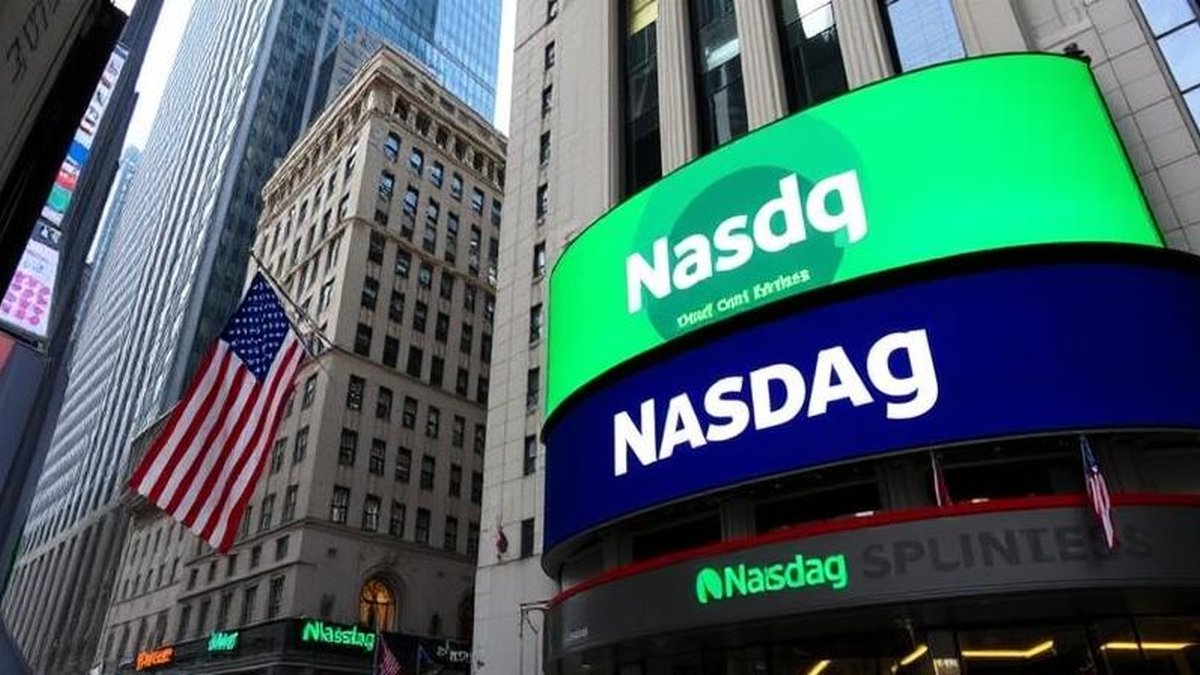Nasdaq Hits All-Time High as AI-Fueled Rally Redefines Market Leadership
The Nasdaq Composite surged to a fresh record high this week, propelled by unrelenting investor enthusiasm for artificial intelligence (AI) technologies and their ecosystem. The rally underscores how transformative AI expectations have become for equity valuations, sector leadership, and portfolio allocation across Wall Street. As capital flows concentrate in a narrow cohort of mega-cap technology firms, market strategists are debating whether this marks the beginning of a new structural bull market or a potentially fragile momentum phase.
1. AI-Driven Momentum Reshapes the Nasdaq
At the center of the move are AI-centric equities — from semiconductor giants powering neural network computations, to cloud service providers offering scalable infrastructure, and enterprise software firms embedding generative AI tools into business workflows. Heavyweights like NVIDIA, Microsoft, and Alphabet continue to lead performance, with investor demand reflecting strong earnings visibility and secular growth tailwinds tied to AI deployment across industries.
Recent trading data show concentrated inflows into AI-related ETFs and sector funds, amplifying upward momentum. Options activity has surged as well, with call option volumes on leading AI names reaching multi-month highs — a signal that institutional investors are betting on further upside despite elevated valuations. Analysts note that implied volatility remains moderate, indicating confidence rather than speculative froth at this stage.
2. Earnings Fundamentals Support Valuations — For Now
Corporate earnings releases continue to justify optimism, as AI leaders deliver robust revenue growth, expanding margins, and strong forward guidance. Chipmakers report record orders from hyperscale data center operators, while software vendors highlight rising subscription revenues linked to AI-integrated features. These fundamentals lend credibility to elevated price multiples, suggesting that the rally is not purely sentiment-driven.
However, valuation dispersion across the index has widened sharply. The top decile of Nasdaq components now trades at forward P/E ratios exceeding 35x, compared to a median of 18x for the broader universe. Such concentration raises the bar for earnings delivery — any disappointment in growth trajectories or product adoption could trigger sharp corrections in leading names.
3. Market Breadth and Sector Divergence
While the Nasdaq Composite celebrates new highs, participation remains narrow. The rally is heavily concentrated in a handful of mega-cap stocks, with many mid-cap and small-cap tech firms lagging behind. Market breadth indicators show fewer than 40% of components trading above their 50-day moving averages — a classic sign of index-level strength masking underlying fragility.
This divergence has broader implications for asset allocation and risk management. Portfolio managers face a dilemma: chase outperforming AI leaders at premium valuations or diversify into undervalued cyclical sectors with weaker momentum. Meanwhile, defensive sectors like utilities and consumer staples have seen muted flows, reflecting investor conviction that growth and innovation will continue to dominate performance.
4. Macro Environment: Supportive Yet Cautious
Macroeconomic conditions have offered a tailwind for growth equities. Moderating inflation and stable interest rate expectations have supported equity risk premiums and compressed bond yields, making long-duration tech valuations more palatable. Liquidity conditions remain accommodative, with central banks signaling patience before tightening further. This backdrop has amplified the relative appeal of innovation-led growth stories.
Still, macro risks persist. A potential reacceleration in inflation, geopolitical tensions, or weaker global demand could challenge current assumptions. Analysts warn that should yields rise or economic data soften materially, high-valuation sectors like AI may face outsized volatility.
5. Institutional Positioning and Retail Flows
Institutional investors have gradually increased exposure to AI and semiconductor sectors, as evidenced by fund flow data and 13F filings. Hedge funds and quant strategies have also leaned into AI momentum trades, utilizing factor tilts toward growth, quality, and earnings revisions. Retail participation remains elevated, with social sentiment indicators and brokerage activity showing sustained interest in AI narratives.
However, some asset managers caution against overconcentration. With passive ETFs increasingly weighted toward a few mega-cap tech names, systemic risk from crowding could amplify drawdowns in the event of profit-taking or policy shocks.
6. Strategic Implications for Investors
For long-term investors, the AI rally represents both opportunity and challenge. Exposure to structural growth themes like machine learning, automation, and cloud infrastructure offers compelling potential. Yet prudent risk management — through diversification, valuation discipline, and dynamic hedging — remains critical. Analysts recommend balancing AI exposure with cyclical and defensive allocations, particularly as market breadth narrows and volatility risk rises.
From a thematic perspective, adjacent sectors — such as cybersecurity, edge computing, and semiconductor equipment — may offer attractive risk-reward profiles with less crowded positioning. Investors seeking to capture the broader AI ecosystem may consider multi-factor approaches combining growth, quality, and earnings momentum filters.
7. Outlook: Can Fundamentals Sustain the Momentum?
The central question for markets is whether AI-driven earnings growth can sustain current valuation levels through 2025 and beyond. If adoption rates across enterprise software, autonomous systems, and cloud AI tools meet projections, profit expansion could justify today’s prices. Conversely, any slowdown in capex or delays in monetization could expose overextensions.
Upcoming earnings seasons and macro data will serve as key litmus tests. Market watchers are particularly focused on capital expenditure guidance from hyperscalers, AI chip supply chains, and subscription growth metrics from enterprise software providers.
Key Takeaway
The Nasdaq’s record high highlights a defining narrative for modern markets: artificial intelligence is not just a technology trend — it is a structural force reshaping valuations, sector leadership, and capital allocation. While the rally rests on credible earnings strength, its sustainability hinges on continued innovation, disciplined capital spending, and macro stability. Investors navigating this new paradigm must weigh conviction in AI’s transformative potential against the realities of concentration risk and cyclical volatility.
For deeper coverage of AI equities, semiconductor trends, and thematic investing strategies, visit our Altcoin Analysis | Exchanges | Apps & Wallets
